Venture Debt refers to any form of debt financing provided to a company that is still dependent on Venture Capital (VC) financing to fund its operations. InnoVen Capital’s core offering is a medium term loan to VC-backed companies, depending on the stage of the company, quantum of equity raised and nature of the requirement. Interest rates and fees are fixed for the tenor of the loan. Repayment of the loan principal and interest payments are typically made on a monthly basis. If the borrower is significantly successful through its lifecycle and has a liquidity event in the form of an IPO or a buyout, an equity “kicker” allows the lender to make some additional returns to compensate for the higher risk.
InnoVen Capital does not normally mandate the end use for the funds and the company is free to use the loan proceeds to fund any number of uses which may include accelerating product development, key hires, expanding to a new market, making acquisitions, operational working capital or even refinancing. While InnoVen Capital does not take board seats on its portfolio companies, the team is happy to leverage its experience and network across geographies, a large number of companies and investors to assist clients as and when required in their business or strategic pursuits.








The company has just raised a Series A round, which is expected to extend its cash runway for 15 months at which point the company has projected to achieve a certain valuation. However, two months after closing its Series A, the company realizes that there is an opportunity to open a new market in the region (accelerate growth), and wants to seize the opportunity but did not allocate extra cash to do so. The company is left with a predicament – it can either use its Series A funds towards accelerating growth and thus reducing its cash runway to less than 15 months, or it can decide to miss the opportunity and therefore also miss the potential to increase its valuation.
A solution would be to take a venture loan. By taking a loan, the company does not need to return to its equity investors after a short 2-month period to ask for additional capital at a similar valuation as its Series A round and it does not need to reduce its cash runway and give up opportunities that were already budgeted for in the next 15 months. By taking a venture loan, the company would be able to seize the new opportunity, maintain its cash runway of 15 months and even potentially increase valuation in that time.

In this scenario, a Series B round company is seeking extra working capital liquidity. As an advanced manufacturer, the company needs to prepare for raw materials 3 months prior to ensure the productions could be conducted smoothly. In addition, the company offered a long backpay cycle of 1-2 months for its downstream customers, which resulted in an overall mismatch of the working capital cycle of 4-5 months.
A solution could have been to raise a venture loan alongside or right after its Series B round in order to gain additional liquidity on the working capital cycle. The company can use venture debt to cushion for the purchase of the raw materials and later then repay with its payment from downstream customers so that equity capital could be allocated on other aspects like R&D or CAPEX investments.

In this scenario, a company realized an opportunity to acquire a company to accelerate its own business. It is in the midst of negotiating and requires extra capital for the acquisition, but the amount is not enough for an additional equity round (maybe need to be raised at a flat round)
A solution could be to raise venture loans to especially for the M&A action. The company could gain the extra capital needed for the acquisition while preventing a small or even flat equity round. The potential opportunity is captured, the company could use it to accelerate growth and raise at a higher valuation in the next equity round.
